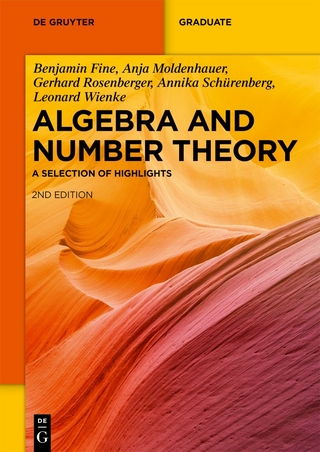
The Calculus of Braids
Seiten
2021
Cambridge University Press (Verlag)
978-1-108-84394-2 (ISBN)
Cambridge University Press (Verlag)
978-1-108-84394-2 (ISBN)
This introductory book on braid groups and related topics keeps prerequisites to a minimum, with appendices providing a detailed guide to the more advanced notions required. A special emphasis is placed on the algorithmic aspects of braids. A range of exercises allow students to test their knowledge, with solutions available.
Everyone knows what braids are, whether they be made of hair, knitting wool, or electrical cables. However, it is not so evident that we can construct a theory about them, i.e. to elaborate a coherent and mathematically interesting corpus of results concerning them. This book demonstrates that there is a resoundingly positive response to this question: braids are fascinating objects, with a variety of rich mathematical properties and potential applications. A special emphasis is placed on the algorithmic aspects and on what can be called the 'calculus of braids', in particular the problem of isotopy. Prerequisites are kept to a minimum, with most results being established from scratch. An appendix at the end of each chapter gives a detailed introduction to the more advanced notions required, including monoids and group presentations. Also included is a range of carefully selected exercises to help the reader test their knowledge, with solutions available.
Everyone knows what braids are, whether they be made of hair, knitting wool, or electrical cables. However, it is not so evident that we can construct a theory about them, i.e. to elaborate a coherent and mathematically interesting corpus of results concerning them. This book demonstrates that there is a resoundingly positive response to this question: braids are fascinating objects, with a variety of rich mathematical properties and potential applications. A special emphasis is placed on the algorithmic aspects and on what can be called the 'calculus of braids', in particular the problem of isotopy. Prerequisites are kept to a minimum, with most results being established from scratch. An appendix at the end of each chapter gives a detailed introduction to the more advanced notions required, including monoids and group presentations. Also included is a range of carefully selected exercises to help the reader test their knowledge, with solutions available.
Patrick Dehornoy (1952–2019) was Professor Emeritus at Université Caen Normandie, and Senior Member Emeritus of the Institut Universitaire de France. His research focused on set theory, algebra, and topology in small dimensions. He authored close to 100 research articles and eight books.
1. Geometric braids; 2. Braid groups; 3. Braid monoids; 4. The greedy normal form; 5. The Artin representation; 6. Handle reduction; 7. The Dynnikov coordinates; 8. A few avenues of investigation; 9. Solutions to the exercises; Glossary; References; Index.
| Erscheinungsdatum | 02.09.2021 |
|---|---|
| Reihe/Serie | London Mathematical Society Student Texts |
| Zusatzinfo | Worked examples or Exercises |
| Verlagsort | Cambridge |
| Sprache | englisch |
| Maße | 160 x 235 mm |
| Gewicht | 540 g |
| Themenwelt | Mathematik / Informatik ► Mathematik ► Algebra |
| Mathematik / Informatik ► Mathematik ► Analysis | |
| Mathematik / Informatik ► Mathematik ► Geometrie / Topologie | |
| ISBN-10 | 1-108-84394-8 / 1108843948 |
| ISBN-13 | 978-1-108-84394-2 / 9781108843942 |
| Zustand | Neuware |
| Informationen gemäß Produktsicherheitsverordnung (GPSR) | |
| Haben Sie eine Frage zum Produkt? |
Mehr entdecken
aus dem Bereich
aus dem Bereich
A Selection of Highlights
Buch | Softcover (2023)
De Gruyter (Verlag)
69,95 €


